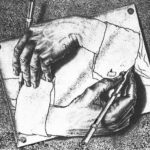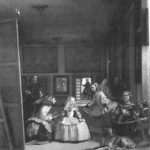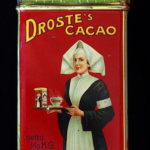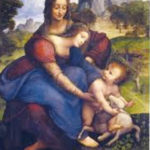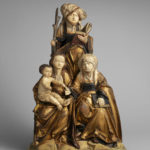J. Barkley Rosser, Jr.
February 24, 2019
Defining Reflexivity
- The word “reflexivity†comes from the Latin “reflectare,†which means “bending back,†as does light when it reflects off a mirror.
- In 1938 sociologist Robert K. Merton wrote about it arguing that an intellectual should reflect on their position in the world and how it affects their ideas and how their ideas affect it, with this mutual going back and forth key to reflexivity. He also discovered the idea of “self-fulfilling prophecies,†where if we all think something will happen we may all act to make it happen.
- Merton influenced philosopher Karl Popper who in the 1950s taught financier George Soros about reflexivity, which became the basis of his theory of investing, eventually becoming a billionaire. Drawing on ideas from economist John Maynard Keynes, Soros agrees with the self-fulfilling prophecy idea of Merton and argues that we act on the basis of what we think others are thinking, who also act on how we are thinking, all reflecting each other.
- The first figure above, “Drawing Hands,†by Maurits C. Escher (1948) shows the basic idea of reflexivity. We see a print of a drawing about drawing with the two hands mutually creating and reflecting each other wirth their drawing. It is popular with reflexivists.
Reflexivity in Velasquez’s “Las Meninasâ€
- The second slide above shows “Las Meninas†(“The Ladies in Waitingâ€) by Diego Velasquez da Silva (1656), which hangs in the Prado in Madrid and is considered by many to be the greatest painting in Spain. It shows the daughter of King Philip IV with her ladies to the right and other court figures. On the left is a self-portrait of Velasquez painting an unseen painting. On the back wall is a mirror with murky images of the king and queen.
- Economic philosopher John B. Davis sees three levels of reflexivity in this painting. One is immanent, the self-referencing that it is a painting about painting. Another is epistemic, that it shows the painter knowingly painting a painting about painting. Finally there is the transcendent, the entrance of those outside the painting, notably the king and queen in the mirror, presumably outside the painting looking in.
- It has long been argued that Velasquez is painting the king and queen, but in 1893, French novelist André Gide argued that he was painting the painting, which he called mise en abyme, “into the abyss,†which has become a post-modernist form of literary analysis focusing on images of self-referencing images in the deconstruction of art.
Self-Referencing and the Droste Effect
- Dutch art historians use the term “Droste Effect†to describe this matter of a work having an image of itself within itself that then also has such an image, implicitly going on infinitely, although not in practice. The term came from the third image above, which shows an early 20th century container of Dutch Droste cocoa. It shows a traditional Dutch woman holding a can of Droste cocoa, with an image of her holding such a can, and so on on it.
- The fourth image above shows a detail from the central panel of a triptych by the Florentine painter Giotto from 1320 known as the Stefaneschi triptych. We see Cardinal Stefaneschi kneeling before St. Peter and holding before him the triptych, which obviously has on it this same image, an early example of the Droste Effect.
The Print Gallery and Consciousness as a Strange Loop of Indirect Self-Referencing
- The fifth slide above is also by Escher from 1956, his “Print Gallery.†It shows a man inside a print gallery looking at a print on the wall of a town in Malta. The image has spatial distortions inspired by Einstein’s theory of general relativity and bends around a hole in the center of the print that contains Escher’s signature. As it bends one sees in the lower right corner a print gallery that expand across the bottom, becoming in fact the print gallery we are looking into through a window, with most of the other prints also ones by Escher.
- In his 1979 Gödel, Escher, Bach: An Eternal Golden Braid, Douglas Hofstadter argues that this print is the ultimate image of the foundation of consciousness, strange loops of indirect self-referencing.
- He sees three levels of reflexivity in it. One involves inclusion, that the print gallery is in the town. Another is depiction, that the town is in the print. The final is representation, that both are in the mind of the man, who may be Escher himself, the whole thing representing his consciousness.
- Hofstadter argued that this print could not exist without the hole. But subsequent studies have shown it can. Without changing anything, what will be in the hole is an infinitely shrinking and spiraling Droste Effect of the whole image. Or one can remove the whole an flatten it out. Then one sees the town with the print gallery in it, with the man inside looking at the print that shows the town and then a more conventional Droste Effect sequence of repeating images. But the original does show a higher form of emergence of consciousness.
Gödel’s Theorem, Reflexive Paradoxes, and the Emergence of Higher Forms
- The Print Gallery suggests to Hofstadter how such indirect self-referencing implies the emrgence of higher forms out of simpler ones, and he draws on the Incompleteness Theorem (1931) of the mathematical logician to highlight this point.
- The Incompleteness Theorem shows that logical systems that could imply arithmetic cannot be complete; they will generate statements that can not be proven to be either true or false. The key to this theorem is the generation of paradoxical statements involving self-referencing. A classic form of this is the Cretan Liar’s Paradox: “All Cretans are liars, and I am a Cretan.†If the speaker is truthful, then he is a liar, but then that means he is truthful, which means he is a liar, in an endless loop of self-referencing that never ends. Only by moving outside the system to a higher level can the truth or falsity be known.
- This is the foundation of the theory of computational complexity and of how it is that some computer programs cannot be solved; they simply run on and on in an infinite unending do loop.
Reflexivity in Theology: The Doctrine of the Immaculate Conception as a Search for Purity
- The Sixth image above shows Leonardo da Vinci’s St. Anne with the Virgin Mary and Jesus. While she does not appear in the Bible, St. Anne was identified in the second century Book of James as being the mother of Mary. In the fourth century, St. Gregory of Byzantium argued that for Mary to be pure enough to bear Jesus in a virgin birth, then she had to be born of a virgin birth, with this arising from the Immaculate Conception. This led to worship of St Anne, with this becoming especially strong in France and Germany, with Chartres Cathedral dedicated to St. Anne, who was also the patron saint of Brittany. In Germany, Martin Luther was praying to St. Anne in a thunderstorm when he decided to swich from studying law to studing theology as an Augustinian monk.
- In a reflexive Droste Effect manner, Johan Eck in Germany extended this argument to Anne herself, arguing her birth must also be a virgin one to her mother, St. Emerentia, shown in the seventh image above, a sculpture from 1515 by the Master of Hildesheim in Germany, now in the New York Met. St. Emerentia hovers over St. Anne on the right, with Mary and Jesus on the left.
- There was much conflict in the Roman Catholic Church over all this. Eventuallin 1854 Pope Pius IX used papal infallibility to declare that the Doctrine of the Immaculate Conception is true, but shortly after 1900 the reflexivity was cut short with that, with the arguments about a possible similar conception for St. Anne in St. Emerentia being declared not to be true.
Conclusion
- The deepest lessons about reflexivity are in the Print Gallery print by Escher. We are in the world looking at ourselves being in the world, while the world looks at us looking at the world with us in it.
- We coexist with others in an ongoing dialogue and interaction, where we affect them and they affect us, with how we view each other constantly evolving as we interact.
- At the deepest level, we can engage in an interior reflection that can spiral inwards as a self-referencing sequence moving towards our perfect selves, our souls, even as this is balanced by a related outwards movement into the outer world. In the end at their most extreme points they are united in a single great and deep unity.
